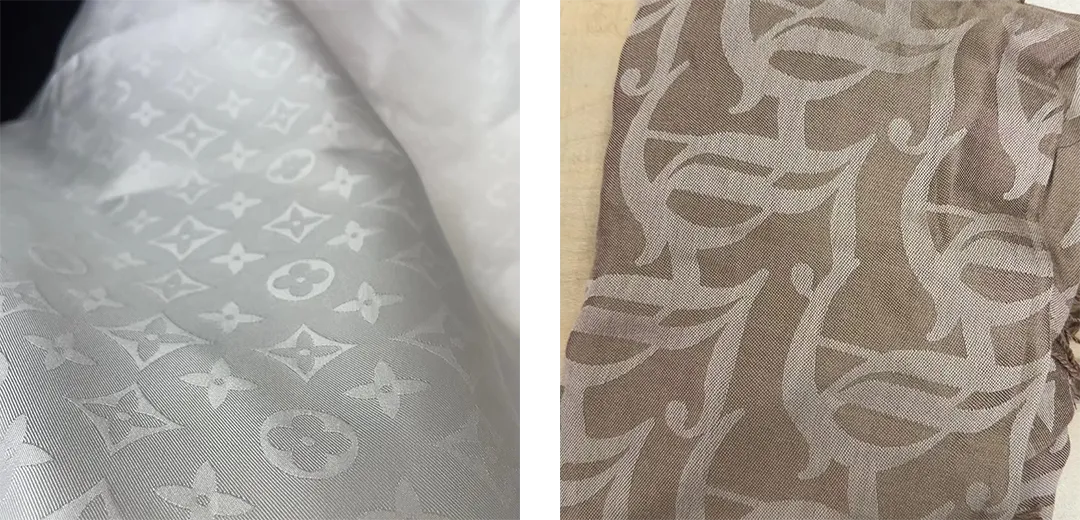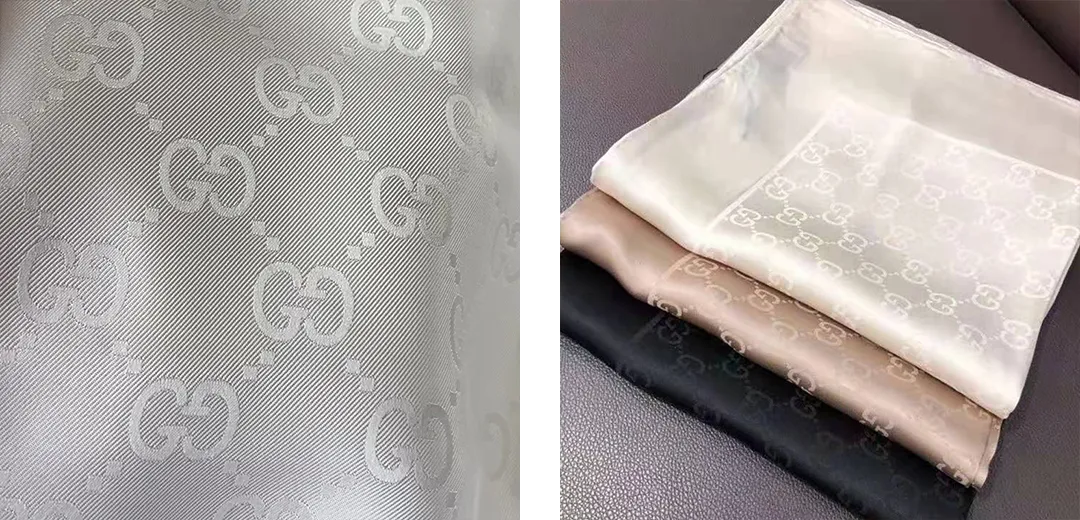Woven Silk Scarf
In today's pursuit of fashion and individual expression, scarves are no longer just a simple accessory, they have become an important element to show personal charm and taste.
Send Inquiry
Product Description
Introduction:
In today's pursuit of fashion and individual expression, scarves are no longer just a simple accessory, they have become an important element to show personal charm and taste. Woven silk scarves have become the first choice of many fashion lovers with their unique texture, luster and comfort. The following will introduce in detail the characteristics, production process and maintenance of this high-end scarf.

1. Material introduction:
Woven silk scarves are made of natural mulberry silk, which is made from a series of complex processes such as refining, reeling and weaving after mulberry silkworms spin silk. Mulberry silk is widely used in high-end clothing and accessories because of its delicate and smooth texture, high gloss and good breathability. Silk is light in texture, soft to the touch, and skin-friendly, especially suitable for people with sensitive skin.
2. Design features:
The design of woven silk scarves usually combines traditional and modern elements, with various patterns, from classic stripes and plaids to complex floral and animal patterns, and even abstract art patterns. In terms of color, there are both low-key solid colors and bright colors to meet the preferences and occasion needs of different consumers. Its design not only focuses on beauty, but also on practicality, and can adapt to different clothing combinations and style changes.
3. Production process:
The production of woven silk scarves is a delicate art. First, high-quality mulberry silk is selected as the raw material, and the quality of the silk thread is ensured through strict screening and testing. Then, precise weaving work is carried out according to the design pattern. This process may take days or even weeks to complete. After weaving, a series of subsequent treatments such as dyeing, color fixing, and ironing are required to ensure that the color of the scarf is bright and lasting, and the shape is stable.
4. Applicable occasions:
Woven silk scarves are suitable for a variety of occasions, whether it is a formal business meeting, a dinner party, or a daily leisure outing, it can add a touch of beautiful scenery. It can not only be used as a neck decoration, but also as a headscarf, handbag accessories or belts, showing different fashion styles.
5. Maintenance method:
In order to maintain the beauty and service life of woven silk scarves, correct maintenance methods are essential. Here are some basic maintenance tips:
- When washing, use neutral or silk detergent, wash by hand in cold water, and do not rub hard to avoid damaging the fiber structure of the scarf.
- Do not wring it out after washing, squeeze out the water gently, and then lay it flat to dry, avoid direct sunlight to prevent fading.
- When storing, the scarf should be completely dried and folded flat, and placed in a dry and ventilated place to avoid heavy pressure and insect infestation.
- Change the folding position regularly to prevent wrinkles caused by folding in the same position for a long time.
6. Matching skills:
The matching of woven silk scarves can be very flexible. Simple-style clothing with a distinctive scarf can immediately enhance the layering of the overall shape; when the clothes themselves are more fancy, choosing a plain or simple patterned scarf can balance the visual effect. In addition, depending on the season, you can choose scarves of different thicknesses and sizes to achieve the effect of warmth or decoration.

Conclusion:
Woven silk scarves have become the darling of the fashion industry with their elegant texture and changeable style. It is not only a practical accessory, but also a symbol of personality and taste. Understanding its material properties, design features, production process, and correct maintenance and matching methods can help us make better use of this beautiful work of art and show our unique personal charm.
Note: The above content is a product introduction of woven silk scarves. Actual product details such as material, design, and process may vary depending on the brand and manufacturer. Please refer to the specific product description when purchasing.
FAQ
Q: What are the material characteristics of silk scarves?
A: Silk scarves are made of pure mulberry silk fabric, which has the characteristics of good gloss, smooth feel, and elasticity. Common silk fabrics include plain crepe satin, twill silk, double crepe and chiffon, each of which has its own unique style and use.
Q: What are the sizes of silk scarves?
A: Silk scarves come in a variety of sizes. Common square scarf sizes are 55x55 cm, 68x68 cm, etc., which are suitable for knotting. Rectangular scarves are suitable for knotting or as shawls, and common sizes are 45x180 cm, 70x200 cm, etc.
Q: How to wash silk scarves?
A: It is recommended to dry clean or hand wash silk scarves, use neutral detergent, and control the water temperature below 30°C. Rinse gently, do not wring hard, and dry in the shade with water, not exposed to the sun. After completely drying, you can iron the reverse side at low temperature.
Q: How to store silk scarves to avoid damage?
A: It is recommended to fold the silk scarves neatly and store them on hangers or small storage boxes to avoid hanging them on hard metal hooks. When storing, avoid damp, unventilated or direct sunlight, and avoid direct contact with chemical agents.
Q: What should I do if the silk scarf loses needles during knitting?
A: If the needles fall during knitting, you can use a knitting needle to pass through the position where the needles fell to prevent them from falling off. Then release the needles one by one until you return to the position where the needles fell and knit again.
Q: What tools and materials are needed to weave silk scarves?
A: Weaving silk scarves usually requires silk fabrics, knitting needles, scissors and other tools. Depending on the complexity of the weaving, additional auxiliary materials or tools may be required.
Q: What are the weaving methods of silk scarves?
A: There are many ways to weave silk scarves, including spiral rotation, looping slipknots, knotting, etc. Different weaving methods will present different textures and styles.
Q: How difficult is it to weave silk scarves?
A: The difficulty of weaving silk scarves varies depending on the weaving method and personal experience. For beginners, it may take some practice and patience to master basic weaving skills.
Q: How to process the edges of silk scarves after weaving?
A: The edge processing of silk scarves is an important step in the weaving process. The edges can be tightened with knitting needles to prevent unthreading or loosening. Decorative edge treatments such as tassels or lace can also be added as needed.
Q: How to choose the right silk scarf fabric for weaving?
A: Choosing the right silk scarf fabric should consider the purpose, season and personal preference. Plain crepe satin has good gloss and is suitable for formal occasions; twill silk is more fashionable and suitable for daily wear. At the same time, the thickness and softness of the fabric should also be considered to ensure that the woven scarf is comfortable and durable.
Q: How to avoid wrinkles in the weaving process of silk scarves?
A: When weaving silk scarves, you should pay attention to keeping the fabric flat and the tension uniform, and avoid excessive pulling or twisting. At the same time, you should also pay attention to avoiding wrinkles when washing and storing, such as hanging with hangers and avoiding folding.
Q: How to maintain the silk scarf after weaving?
A: After the silk scarf is woven, it should be washed and maintained regularly. Follow the above cleaning methods when washing, and avoid using strong detergents or bleach. When storing, pay attention to avoid direct sunlight and humid environments to maintain the gloss and texture of the scarf.
Please note that these are answers based on general situations. Specific weaving techniques, cleaning and maintenance methods may vary depending on the specific material, weaving method and personal needs of the silk scarf. When doing this, it is recommended to refer to the product instructions or consult professional knitters for advice.





























